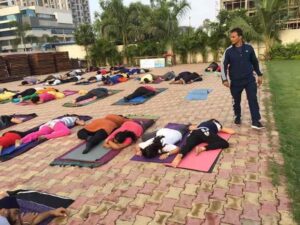
As a teacher, trainer, or coach, it is your responsibility to create an environment that is inclusive, adaptable, and supportive, where every student or participant has access to the same learning opportunities, despite their individual levels and abilities. While this may seem like a daunting task, there are several modifications and adjustments you can make to your methods that can make all the difference.

Firstly, it’s essential to understand that different people learn in different ways: some are visual learners, some are auditory learners, and others may prefer hands-on activities. Therefore, it’s vital to incorporate a variety of teaching techniques into your lessons or sessions to cater to everyone’s unique learning style.
For example, you can add visual aids such as charts, diagrams, or images to help visual learners see the connections between concepts, or use videos or podcasts to engage auditory learners. Meanwhile, hands-on activities such as role-plays, experiments, or practical exercises can help kinesthetic learners absorb information better.
Adjusting the pacing and complexity of your lessons or sessions is another crucial modification to consider. Some individuals may require a slower pace to understand the information, while others may need to be challenged to stretch their abilities. Be mindful of the level and pace of the content you are delivering, and consider ways to differentiate the information to suit individual needs.
For instance, you could break the information down into smaller parts, use simpler language, or repeat key points several times to help those who need to take things slowly. Conversely, you could add more complex tasks or questions to challenge those who are advanced.
Moreover, providing additional support, such as one-to-one tutorials, extra practice, or online resources, can help individuals who need extra attention or who are struggling to keep up with the pace of the class.

Finally, teamwork and collaboration can be a powerful tool to facilitate learning for everyone, no matter their abilities. Encourage group discussions, pair-work, or team-building activities, and assign roles and responsibilities to promote a sense of accountability and collaboration. This allows everyone to learn from each other and can foster an environment of inclusivity, where everyone feels valued and supported.
Tailoring your methods to meet the diverse needs of your students or participants can be challenging, but it’s also rewarding. By incorporating a variety of teaching styles, pacing your classes, providing additional support and fostering teamwork and collaboration, you can create an environment where every person can thrive, learn and achieve their goals, no matter their level or ability.








